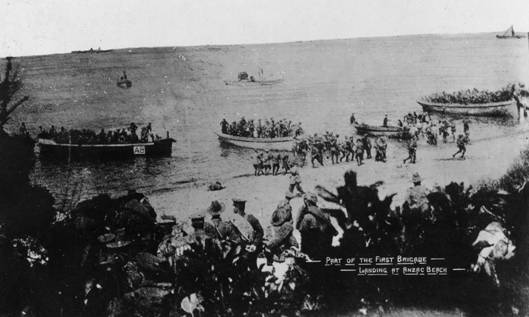- Author
- A.N. Other and NHSA Webmaster
- Subjects
- Biographies and personal histories, WWI operations
- Tags
-
- RAN Ships
- None noted.
- Publication
- March 2011 edition of the Naval Historical Review (all rights reserved)
One of our long standing members, Norman Rivett, has recently unearthed a valuable original manuscript of a first hand account by a member of the Royal Naval Division which served at Gallipoli in 1915. Norman had two uncles serving with Royal Naval Division. As we again approach Anzac Day this provides a unique insight into life experienced by sailors serving in the trenches. The document is presented with its original grammar and spelling.
‘If you can walk you are fit to go up the line’. You have probably heard of the guff which was the Doctor’s orders to many men suffering from dysentery, jaundice or just physical exhaustion on Gallipoli in the early days when our forces were seriously thinned out by disease and casualties.
The man I am going to tell about would have needed a Doctor to go up the line and order him down the line. Jim Mathews came from Dublin to Liverpool early September 1914 and joined the RNVR on board what was then HMS Eagle in Salthouse Dock. After completing training out to Egypt and eventually landed at Gallipoli April 26th, Jim and I being in the same section platoon and company all that time. During the early days the line became so thinly manned so that sentries did one hour on, one off during the night and then at dawn one hour ‘Stand to Arms’. Sentries fired their rifles all night to keep awake as much as anything. The incident I wish to tell is one morning in the front trench we had ‘Stood Down’ from ‘Stand To’ and posted sentries. Jim Mathews was one. I was preparing breakfast, a niche cut out of the parados was the fireplace and I was frying 3 or 4 pieces of bacon for us mates who took turns as cook. Suddenly an exclamation from Mathews and a lurid enquiry: ‘Who the — was throwing stones’? I watched him put his hand behind his head, his fingers showed blood. ‘Get down Jim you have been hit’ I said. Down he got, we got his Field Dressing out and roughly bandaged him up, but had to argue with him to go down and get it seen to properly. Eventually he did go and we thought we won’t see him for a few weeks.
Two or three hours later the bold Jim appears his head swathed in bandages and his cap perched on top. We started to chuckle at him and he growled: ‘Its — to laugh about’ so one asked ‘What did the Doctor say Jim’? ‘The Doctor said “Carry On” and ‘I’m carrying on’ snarled Jim. Obviously he had been told to carry on down to the beach for transport to hospital at Mudros. Jim Mathews stayed up until we were relieved. He stayed with us for six weeks up and down the line, in the meantime off had come the dressings, now and again during our rest time out of the line Jim got treatment now and again from the medical staff for a running abscess at the back of his head, no one dreamed of or had forgotten he had been wounded. We slept in shallow trenches wide enough to stretch out in the rest camp, using our tunics for pillows at night. One morning getting up Jim was lying next to me his tunic was stuck to his neck with matter. Way down to the 3rd Field Ambulance went Jim. The RAMC Sergeant accepting casualties was feeling around the lump, the running abscess, asked ‘What did this Mathews’? Jim said ‘A bullet, Sergeant, off Gallipoli’. To Mudros Hospital went Jim and a Mark 6 bullet was removed from his head.
It is necessary to explain we were landed with the long Lee Enfield rifles, Mark 6 ammunition, which for those not familiar with was a round nosed bullet. Johnny Turk accused us of using Dum Dums compared with the modern short Lee Enfield and pointed nose bullets. The trenches were so disposed at that time, stray bullets were coming from many directions, and one of ours had hit Jim.

Image courtesy of Royal Australian Historical Society




